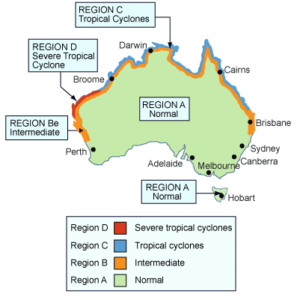KEY POINTS
- Solar panels can be installed on flat roofs either with a penetrative or ballasted tilting rack.
- While it is possible to install solar panels on a flat roof without a tilting rack, it is not recommended.
- Maintaining and installing solar panels on a flat roof is typically more affordable and easier than a traditional roof.
On this page, you’ll find:
Advertisement
Can solar panels be installed on a flat roof?
The straightforward answer to whether solar panels can be installed on flat roofs is a resounding yes.
In solar terms, ‘flat’ refers to a roof that is angled at less than 10 degrees and panels tiled at less than 10 degrees when taking into account the angle of the roof.
Commercial premises are more likely to have a flat roof than residential properties, yet many businesses use solar power, indicating that putting panels on a flat roof can be done successfully.
Compare solar electricity plans in your state
Here are some of the cheapest solar-specific deals from the retailers on our database. These costs are based on the Ausgrid network in Sydney but prices will vary depending on your circumstances. We show one product per retailer, listed in order of lowest price first. Annual price estimates assume general energy usage of 3900kWh/year for a residential customer on a single rate tariff. Price estimates exclude solar feed-in tariff credits. These are products from referral partners†. Our database may not cover all deals in your area, and please check retailer websites for up to date information.
Here are some of the cheapest solar-specific deals from the retailers on our database. These costs are based on the Citipower network in Melbourne but prices will vary depending on your circumstances. We show one product per retailer, listed in order of lowest price first. Annual price estimates assume general energy usage of 4000kWh/year for a residential customer on a single rate tariff. Price estimates exclude solar feed-in tariff credits. These are products from referral partners†. Our database may not cover all deals in your area, and please check retailer websites for up to date information.
Here are some of the cheapest solar-specific deals from the retailers on our database. These costs are based on the Energex network in Brisbane but prices will vary depending on your circumstances. We show one product per retailer, listed in order of lowest price first. Annual price estimates assume general energy usage of 4600kWh/year for a residential customer on a single rate tariff. Price estimates exclude solar feed-in tariff credits. These are products from referral partners†. Our database may not cover all deals in your area, and please check retailer websites for up to date information.
Here are some of the cheapest solar-specific deals from the retailers on our database. These costs are based on SA Power network in Adelaide but prices will vary depending on your circumstances. We show one product per retailer, listed in order of lowest price first. Annual price estimates assume general energy usage of 4000kWh/year for a residential customer on a single rate tariff. Price estimates exclude solar feed-in tariff credits. These are products from referral partners†. Our database may not cover all deals in your area, and please check retailer websites for up to date information.
How to install solar panels on a flat roof
A flat roof lacks the tilt that allows panels to absorb as much sunlight as possible. Installers must achieve the proper angle for solar panels by tilting the panels themselves.
This can be done by mounting the panels onto a racking system known as a ‘tilt rack’.
These racks are angled (10 degrees or more) and spaced accordingly to maximise their exposure to sunlight and to allow rainwater to effectively clean them.
However, it is worth noting that installing tilting racks is generally more expensive and increases overall wind loading.
Penetration tilt racks
Penetration tilt racks are mounting systems that securely attach to a roof’s structure by penetrating it, maximising solar energy capture.
However, installing solar panels on a flat roof could potentially cause damage to the roof membrane.
That’s because tilt racks are fastened into place by using screws that go into the roof itself, increasing the risk of water damage to your roof and ceiling.
However, the Clean Energy Council’s Guideline for Accredited Installers explicitly requires all installers to ensure that “roof penetrations shall be suitably sealed and waterproofed for the expected life of the system”.
If you opt for this solution, make sure that you consult a highly-rated solar installer, and study the reimbursements they offer should a leak occur.
Ballasted tilt racks
If your roof is strong enough, ballasts or weights (typically made of concrete or filled with sand or water) are sufficient to secure the rack and panels on the roof without physically penetrating it.

Source: RMIT Edu, March 2025
The downside is that ballasted racks are not able to be used in regions susceptible to cyclones and gale-force winds. If you live in Regions C, D, and B, installing a ballasted tilt rack is not recommended.
A potential solution is to install a racking system with a parapet framework, which creates a barrier around the panels on three sides to prevent wind uplift and enhance structural integrity.
Installing panels flat without a tilt rack
While it’s also possible to lay panels flat on a flat roof, we don’t recommend it. Doing so risks water, dust, or debris pooling or sitting on the panels, potentially causing the panels to deteriorate more quickly.
Consequently, flat panels would require frequent cleaning to maintain optimal performance.
Moreover, installing solar panels flush against a flat roof deprives them of the air circulation and heat dissipation that tilt racks provide, effectively lowering the amount of energy generated.
Aside from committing to regular cleaning if you opt to lay your panels flat, SolarQuotes notes that you can buy frameless solar panels that allow water to drain off the panels more easily or buy panels with drainage channels at the corners to give the water a way to escape.
Both options may be pricier than regular solar panels.
Read our informative guide on how to choose the best solar panels in Australia
How to optimise sunlight exposure to panels on a flat roof
Regardless of how your panels are mounted onto your flat roof, it is vital to maximise how much sunlight they are exposed to during the day.
Facing your panels in the optimal direction
Considering the above solutions is required because a solar panel is positioned at the ideal angle and direction to catch maximum sunlight is vital to the performance of your solar system.
This generally means that the panels should face true north and be positioned at an angle of between 12 and 43 degrees, depending on your location.
Reduce obstructions to your solar panels
As well as the angle and direction of your panels, you can also improve their exposure to sunlight by regularly removing any trees, branches or obstructions that may shade them.
This may be tricky given that flat roofs are anecdotally more often shaded by retaining walls or even other nearby buildings.
Other considerations
Your solar installer will also be able to advise on what factors to consider before going ahead with installation on your flat roof, including what impact the cost of installing your panels and their efficiency at producing electricity may have on the payback period of your solar investment.
You might also be interested in:
Maintenance and cost of solar panels on a flat roof
Maintaining solar panels on a flat roof is generally easier than on an angled roof because the panels are parallel to the ground and potentially on a single-storey building, making them easier to work on. Cleaning them regularly will help maintain efficiency.
One downside to a flat roof in regard to maintenance, though, is that if you live in an area where it snows, you may have to clear the snow build-up to ensure the panels’ efficiency and prevent undue deterioration.
The cost of installation on a flat roof is often cheaper than a tilted roof simply because it’s easier to access a flat roof – unless you opt for less common frameless or channelled panels. But not all solar installers are deeply familiar with flat-roof installations so it may pay to ask specifically about this issue when you obtain quotes. With the right angle, installation technique, racking system and panel optimisation, you can still get good performance from your solar system and so reduce your electricity bills without too much additional hassle.
Original reporting by Jared Mullane




Share this article